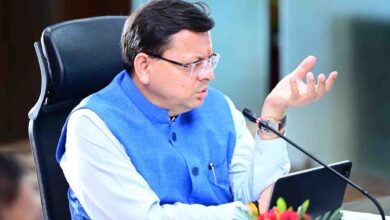North, east India to be hotter climate condition till May: IMD

After a harsh winter for the northern States, most parts of the country should brace for a hotter than usual summer this year.
In its summer forecast, India Meteorological Department (IMD) on Monday forecast that day temperatures are likely to be above normal in north, northeast, parts of east and west India except for south and central India between March and May, which represents the pre-monsoon season for the country.
“The maximum temperatures will be as high as 0.86 degrees celsius higher than normal across northern, eastern, and western India,” the IMD said.
However, the pre-monsoon months of March, April, and May will provide some respite for the other regions, especially south India, where the mercury is likely to dip as much as 0.57 degrees celsius from its normal. There is a probability forecast for above maximum temperatures in Chhattisgarh, Odisha, Gujarat, coastal Maharashtra, Goa and coastal Andhra Pradesh.
The worst impact of the summer will be felt in Odisha and Chhattisgarh, where maximum temperatures will deviate 0.86-degree celsius from their usual averages. Last week, Bhubaneswar was the first region to record 40 degrees celsius anywhere in India this year. North Indian States such as Delhi, Himachal Pradesh, Haryana, and Uttar Pradesh should brace for summer temperatures anywhere from 0.46-degrees celsius to 0.71-degree celsius above normal.
“During the upcoming hot weather season (March to May), above normal seasonal maximum temperatures are likely over most of the subdivisions of north, northwest and northeast India, a few subdivisions from Eastern and Western parts of Central India and few coastal subdivisions of north peninsular India.
However, below normal seasonal maximum temperatures are likely over most of the subdivisions of the South peninsula and adjoining central India,” the IMD said.
The IMD said above normal seasonal minimum temperatures are likely over most of the subdivisions of north India along the foothills of Himalayas, Northeast India, the Western part of Central India and Southern part of peninsular India. Kerala and South interior Karnataka would experience the coolest summer this season, followed in that order by Tamil Nadu, North Interior Karnataka, Rayalaseema and Madhya Maharashtra.
The next coolest on the list are Telangana, Marathawada, Vidarbha, West Madhya Pradesh, Jammu & Kashmir and Laddakh.
“However, below normal season minimum temperatures are likely over most of the subdivisions of the Eastern part of Central India and few subdivisions of the extreme Northern part of the country,” it said.
The onset of summer began a little earlier than normal this year, with most of the Northern, Western, and Eastern parts of the country breaching the 30 degrees celsius mark nearly two to three weeks before they usually do.
The IMD said moderate La Niña conditions are prevailing over the equatorial Pacific and sea surface temperatures (SSTs) are below normal over the central and eastern equatorial Pacific Ocean. The latest model forecast indicates that La Niña conditions are likely to sustain during the upcoming hot weather season (March to May), it added.
La Nina is associated with the cooling of the Pacific waters and El Nino is its anthesis. The phenomenon has an impact on the weather of the Indian sub-continent. The IMD said it will release the second summer forecast for April to June in April.
The IMD last month had said the minimum temperature recorded in the country in January was the warmest for the month in 62 years. South India was particularly warm.
The month was the warmest in 121 years, with 22.33 degrees Celsius in south India, followed by 22.14 degrees Celsius in 1919 and 21.93 degrees Celsius in 2020 as the second and third warmest months.
Central India was also the warmest (14.82 degrees Celsius) in the last 38 years after 1982 (14.92 degrees Celsius), while 1958 with 15.06 degrees Celsius was the warmest in the 1901-2021 period.
Tuesday, 02 March 2021 | PNS | New Delhi






